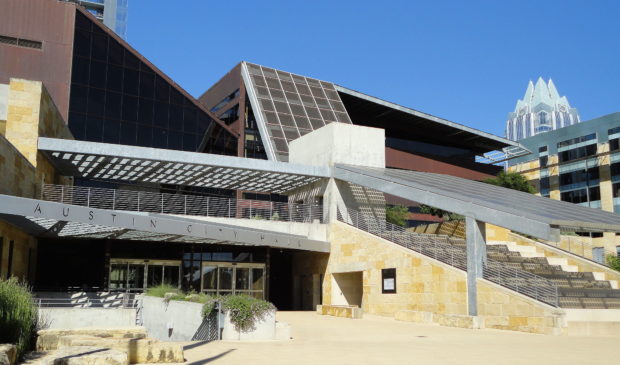CodeNEXT draft presented to land use commissions
Thursday, February 2, 2017 by
Joseph Caterine In the first “fifth Tuesday” meeting of a CodeNEXT-geared 2017 calendar, the city’s land use commissions convened to receive a presentation of the CodeNEXT draft text, which was published online the day before. The release marks a big step in the overhaul of the Land Development Code, the first comprehensive revision since 1984.
Admittedly, the text is still very much a work in progress, said consultant Lisa Wise.
“We’ve reached a major milestone, but there are still a couple things that are still underway,” she said at the joint meeting of the Zoning and Platting Commission and Planning Commission.
Those missing sections include the affordable housing incentives program, “functional green” (which promises to incorporate more herbage in urban centers), signage, street design, transportation demand management and traffic impact analysis. Wise said that these sections should all be completed in the next few months.
“Draft 1 represents a big change,” said consultant Peter Park, “and what it requires is an openness to change and an openness to the possibility that the zoning could actually be better.”
In response to the CodeNEXT team’s urging for dialogue, Planning Commissioner Angela De Hoyos Hart asked if land use commissioners would be limited to the online comment tool available to the public for their input. “How are you hoping that we will provide our feedback?” she asked.
Planning Commissioner Nuria Zaragosa suggested that Chair Stephen Oliver act as a repository for commissioners’ comments. “I would love nothing more,” he said.
Zoning and Platting Commissioner Ann Denkler asked if the draft was available in Spanish.
“We are currently working with (the Public Information Office), but the code itself in this draft form is not available in Spanish,” Alina Carnahan, a CodeNEXT spokesperson, said. “It does not tend to be a common practice (to provide Spanish translation), at least in first drafts.”
Planning Commissioner James Shieh said that as far as future presentations go, he would like to have a walk-through geared toward how the process works as a whole in the new code as opposed to presentations going over individual sections. “When we go through cases — a zoning case or a subdivision case, say — (we commissioners are all thinking), what could this end up being?” he said.
Dan Parolek, president of Opticos Design and one of the CodeNEXT consultants, encouraged commissioners to remember that this was the public review draft and that there was still much work to be done.
“There’s going to be a lot of critical conversation, but we need to make sure that it’s directed in a way that’s constructive and not dismissive,” he said.
Planning and Zoning Department Acting Division Manager Jorge Rousselin went over the foundational priorities of the rewrite: mobility, community, environment, housing and permitting.
“We heard from the community that we need a streamlined and user-friendly permitting process,” he said. “This doesn’t necessarily mean a fast-track process; it means having clearer zoning districts.”
Those clearer zoning districts proposed by the CodeNEXT draft fall into two categories: transect and nontransect. These two types arose from the CodeNEXT team’s efforts to move away from strictly use-based zoning, according to consultant John Miki.
“Transect zones (involve) first thinking about the form of a place, and then asking the question (of) what are the appropriate uses,” he said.
In total, there are 13 transect zones, ranging from “neighborhood edge” to “urban core.” The existing 42 base zoning districts have been converted into 32 nontransect zones, and the current 155-plus land uses have been downscaled to about 123 new land uses and sub-uses.
The next joint CodeNEXT meeting is scheduled for the end of February, and the mapping draft — the second half of the CodeNEXT proposal — is scheduled for release in April.
As the meeting closed, Zoning and Platting Commissioner Gabriel Rojas took a moment to recognize the accomplishments of city staff and their consultant partners.
“In response to some disparaging comments I’ve heard in the community in the past week, personally I believe we have one of the best planning departments in the country,” he said. “You all have been a lighthouse to weary travelers in a storm.”
This story has been altered since publication to clarify that the meeting was a joint meeting of the Zoning and Platting Commission and the Planning Commission.
Photo by M.Fitzsimmons – Own work, CC BY-SA 3.0, made available through Wikimedia Commons.
The Austin Monitor’s work is made possible by donations from the community. Though our reporting covers donors from time to time, we are careful to keep business and editorial efforts separate while maintaining transparency. A complete list of donors is available here, and our code of ethics is explained here.
You're a community leader
And we’re honored you look to us for serious, in-depth news. You know a strong community needs local and dedicated watchdog reporting. We’re here for you and that won’t change. Now will you take the powerful next step and support our nonprofit news organization?









